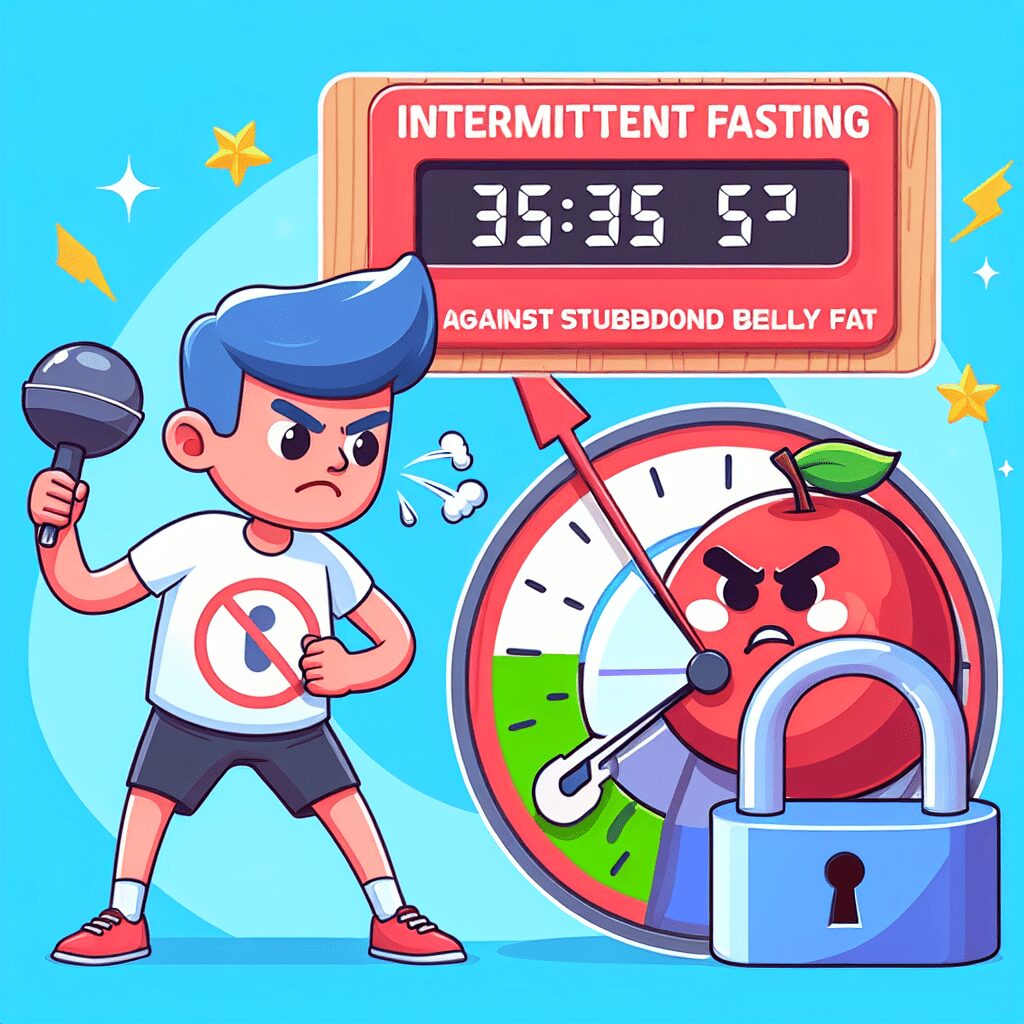Chapter 1: Understanding Intermittent Fasting
Intermittent fasting is more than a dietary choice; it’s a lifestyle shift that offers profound health benefits, especially in tackling stubborn belly fat. This approach to eating isn’t about restricting what foods you eat but rather when you eat them. By alternating periods of eating and fasting, you allow your body to fully digest and utilize the nutrients from your meals, leading to improved metabolic health and weight loss.
Chapter 2: Why Intermittent Fasting Works
Intermittent fasting works by aligning with your body’s natural rhythms. During fasting periods, your insulin levels drop, allowing your body to start burning stored fat for energy. This process is particularly effective at targeting visceral fat, the type of fat stored in the abdominal cavity that’s linked to various health issues. By reducing insulin resistance and promoting fat loss, intermittent fasting becomes a powerful tool in sculpting a leaner, healthier body.
Chapter 3: Who Can Benefit from Intermittent Fasting
Almost anyone can benefit from intermittent fasting, but it’s particularly beneficial for those struggling with stubborn belly fat. Whether you’re aiming for improved athletic performance, better metabolic health, or simply looking to fit into your old jeans, intermittent fasting can be tailored to suit your lifestyle. Individuals with specific medical conditions or histories of eating disorders should consult with a healthcare provider before starting.
Chapter 4: How to Start Intermittent Fasting
Starting intermittent fasting can be as simple as extending your usual overnight fast. Here’s a basic guide to get you started:
-
Choose Your Window: Select an eating window that fits your lifestyle. Common choices include 16/8 (16 hours of fasting, 8 hours of eating), 20/4, or even 5:2 (eating normally for five days, restricting calorie intake to about 500-600 calories on two non-consecutive days).
-
Stay Hydrated: Drink plenty of water, especially during fasting periods, to help curb hunger and keep your body functioning at its best.
-
Eat Nutritious Foods: When breaking your fast, focus on nutritious, whole foods to nourish your body and keep you feeling full longer.
- Listen to Your Body: Pay attention to how your body responds to fasting. Adjust your eating window as needed to ensure you feel energetic and healthy.
Chapter 5: Real-Life Success Stories
Countless individuals have transformed their bodies and health through intermittent fasting. John, a 35-year-old software developer, struggled with belly fat for years. After adopting a 16/8 fasting protocol, he lost 20 pounds in just three months, with noticeable reductions around his waist. Similarly, Sarah, a mother of two, used intermittent fasting to shed post-pregnancy weight, finding the flexibility of fasting windows fit perfectly into her busy schedule.
Pros and Cons of Intermittent Fasting
Pros:
- Effective for weight loss, particularly in reducing belly fat.
- Simplifies daily meal planning and preparation.
- Improves insulin sensitivity and metabolic rate.
- May increase longevity and protect against diseases.
Cons:
- May be challenging initially, especially for those accustomed to frequent snacking.
- Requires careful planning to ensure nutritional needs are met.
- Possible side effects like hunger, fatigue, or irritability during the adjustment phase.
FAQs
Q1: Can I drink coffee while fasting?
A1: Yes, black coffee, without sugar or milk, is allowed during fasting periods and can actually help suppress appetite.
Q2: Will intermittent fasting make me lose muscle?
A2: If done correctly, intermittent fasting should not cause muscle loss. Combining fasting with resistance training can help maintain or even build muscle mass.
Q3: How long does it take to see results?
A3: Results vary, but many people notice changes within a few weeks, with significant improvements often reported after 2-3 months of consistent practice.
Q4: Can I exercise while fasting?
A4: Yes, exercising during fasting periods is safe for most people and can enhance fat burning. Listen to your body and adjust intensity as needed.
Q5: Is intermittent fasting safe long-term?
A5: For most healthy individuals, intermittent fasting is safe to practice long-term. However, consulting with a healthcare provider for personalized advice is always recommended.
Intermittent fasting is not just a passing diet trend but a sustainable lifestyle choice that offers a promising solution for those struggling with stubborn belly fat. By integrating it into your routine, you’re taking a significant step towards improved health and well-being.
Disclaimer: As an Amazon Associate, I earn from qualifying purchases. I may earn a commission from qualifying purchases as an affiliate. Please note that I only recommend products I believe will provide value to my readers.









